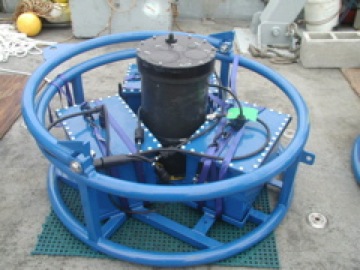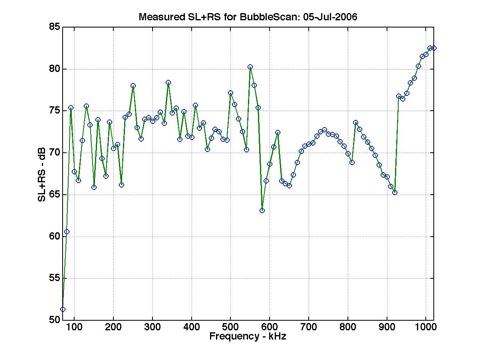BubbleScan
This system was created in a hurry in the hopes that we
could get a broad enough frequency coverage to spot bubbles
in shallow thin layers during an experiment in Monterey
Bay. I worked at building relatively broadband matching
networks for a set of transducers with nominal resonant
frequencies of 104, 165, 265, 420, 700, and 1100 kHz. The
final frequency range was 70 kHz to 1020 kHz with data
taken every 10 kHz. So far the data have been somewhat
confusing and the system never quite worked as planned but
it did provide some unusual looks at the water column and
some tantalizing evidence that thin layers of phytoplankton
can produce oxygen at such a rate as to cause bubbles to
form on detritus in the water. And bubbles, you know, are
terrific scatterers of sound
.
Measured system response (source level plus receiving
sensitivity) seemed adequate to cover this frequency range:




